By Diane Harris, HQ Stitch Brand Ambassador
I quilted two projects on a deadline last week, to be published in autumn magazine issues. A looming due date creates some pressure and I don’t really enjoy that, but it does force me to finish, and that’s a good thing.
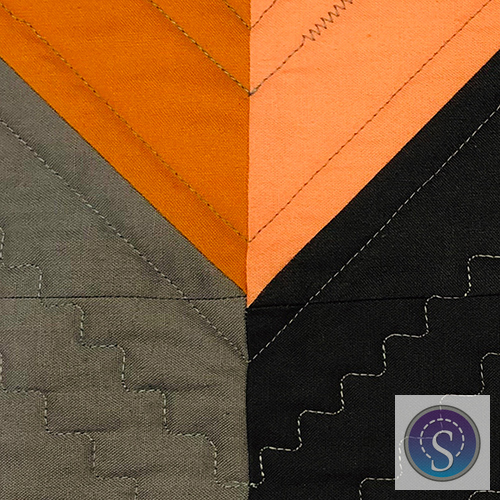
I used both the HQ Stitch 510 and 710 machines, and I realized as I was finishing up the bindings that I’d learned or been reminded of some valuable lessons.
1. Make a Plan
I doodled ideas on paper before I began quilting the projects, and I had a pretty good idea of the major design elements before I started. “Stitching on paper” is so important because not only can it help you to see what will work in the spaces, it begins to create muscle memory so that your hands, eyes and mind can work together and execute your vision for the quilting.
2. Baste Well.
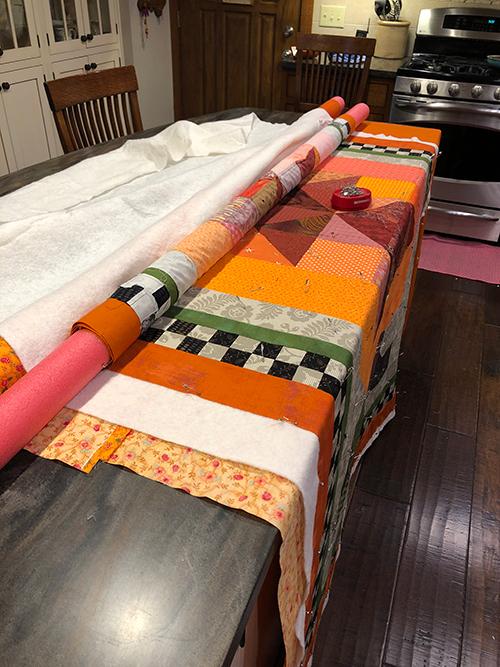
I use a technique called board basting. I have actual wooden boards and also some pool noodles that have been adapted for this technique. If you need instructions, I use Right Sides Together’s handy reference sheet. Works like a charm on my kitchen island, above.
3. Combinations are Exciting
If you use some straight lines and some curving lines, you get more interest. It’s just like choosing fabrics: Sameness equals boredom. Variety equals energy!
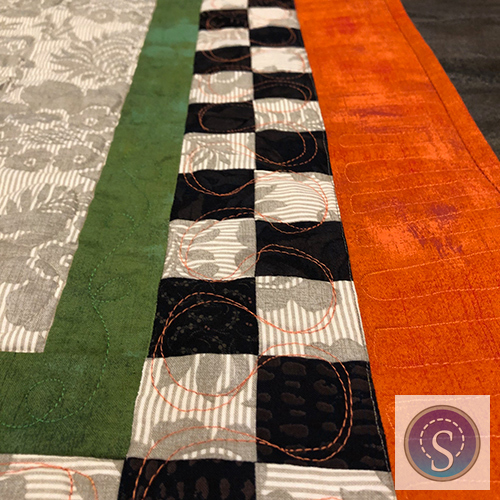
Above you can see that I used three different motifs in the borders of this quilt: Simple loops in the green border, curling ribbon in the checkerboard, and what I call “ladyfingers” in the orange. Variety is a good thing!
4. Match Bobbin Color to Top Color
No matter how skillful you are, there are times when the bobbin thread will show on top of the quilt. If you match the bobbin color to the top color of thread, you’ll be much happier with the result.
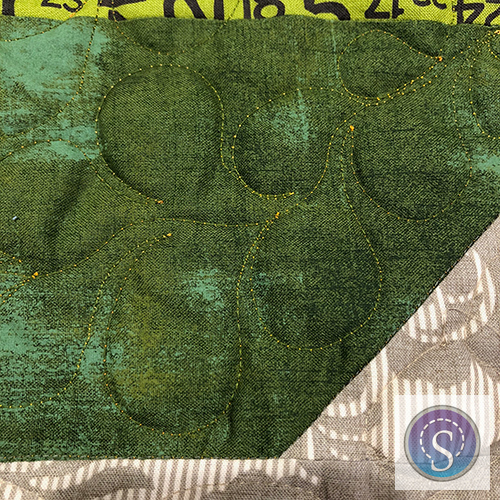
If only I had used green thread in the bobbin, above. I decided not to remove this quilting, because…See #5.
5. The Big Picture isn’t Nit-Picking
What do I mean? It’s easy to focus on every little bobble and wobble and be discouraged about our machine quilting. My own skills are passable but not great by any stretch. But I have learned that when I back away from the quilt to see the big picture, or how it looks overall, my machine quilting is just fine.
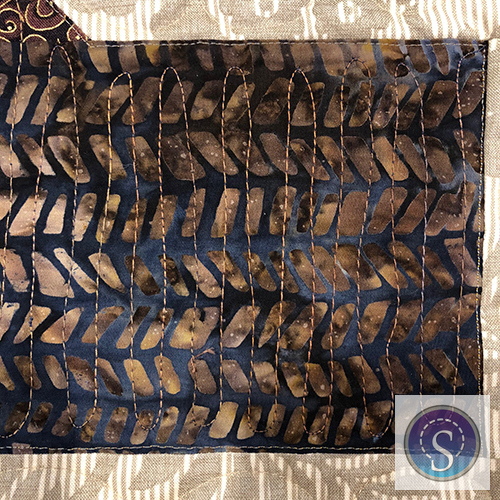
If you are trying to win Houston, then you do have to nit-pick, of course! But most quilters aren’t trying to win a major show. They’re making quilts for their family and friends, most of whom aren’t even quilters. These people aren’t going to criticize the machine quilting! They’re going to love the quilt and the fact that you made it.

Leave A Comment